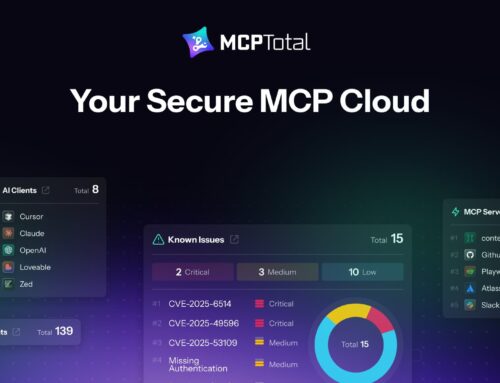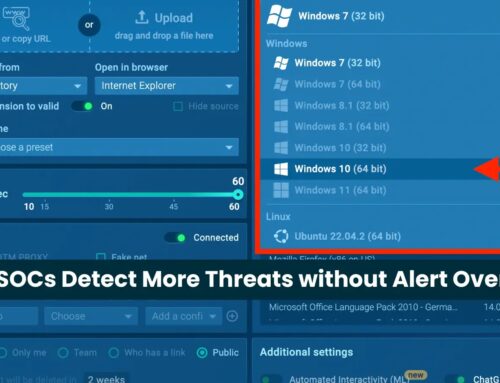
The Wild West of Shadow IT
The modern enterprise faces a silent, yet significant, threat: the untamed landscape of Shadow IT. Once relegated to niche corners, the proliferation of cloud-based services and user-friendly applications has transformed every employee into a potential IT decision-maker. This democratization, while fostering unprecedented productivity, has simultaneously outpaced traditional security controls, creating a veritable “Wild West” where unknown and unmanaged applications run rampant. This article delves into the implications of this digital frontier, highlighting its perils and outlining concrete strategies to regain control.
The Proliferation of Unsanctioned Applications
In today’s fast-paced work environments, the ease with which employees can adopt new tools is both a blessing and a curse. The one-click installation of browser extensions, AI services, and SaaS platforms allows teams to quickly adapt to evolving demands and enhance workflow efficiency. For instance, a marketing team might adopt a new AI-powered content generation tool, or a sales team might begin using a specialized CRM plugin, all without formal IT approval. While these applications appear to streamline processes, they often introduce unvetted code into the organizational ecosystem, creating blind spots for security teams. The sheer volume and velocity of new application onboarding outstrip the capacity of traditional IT teams to vet and secure them, leading to an ever-expanding attack surface.
Security Implications of Unmanaged Tools
The primary concern with Shadow IT lies in its inherent lack of visibility and control. Each unsanctioned application represents a potential conduit for data breaches, malware infections, and compliance violations. Consider the following risks:
- Data Exfiltration: Employees might use unauthorized cloud storage or file-sharing services to transfer sensitive company data, bypassing established data loss prevention (DLP) policies.
- Malware and Ransomware: Unvetted plugins or applications can contain vulnerabilities, serving as vectors for malicious code. A seemingly innocuous browser extension could, for example, exploit a vulnerability like CVE-2023-38831, allowing an attacker to execute arbitrary code or steal credentials.
- Compliance Gaps: Organizations operating under strict regulations (e.g., GDPR, HIPAA, PCI DSS) can inadvertently fall out of compliance if sensitive data is processed or stored by unapproved third-party services that do not meet the necessary security and privacy standards.
- Credential Theft: Some unvetted applications may request excessive permissions or even collect user credentials, leading to account compromise.
- Supply Chain Risks: Integrating third-party tools means inheriting their security posture. If an unsanctioned SaaS provider suffers a breach, your organization’s data could be exposed.
The Outpaced Security Posture
The reference link rightly points out that “Employees are onboarding apps faster than IT can secure them.” This rapid adoption cycle creates a constant state of flux for the security perimeter. Traditional perimeter-based defenses are largely ineffective against cloud-native Shadow IT, as data no longer solely resides within the corporate network. Identity and access management (IAM) systems struggle to keep pace with the multitude of new application accounts, leading to orphan accounts and over-provisioned access. Furthermore, a lack of centralized inventory means security teams cannot effectively patch vulnerabilities or enforce consistent security policies across all IT assets.
Remediation Actions
Addressing the Wild West of Shadow IT requires a multi-pronged approach that balances security with employee productivity. A complete ban is often impractical and can lead to backlash or the even more covert use of unsanctioned tools. Instead, focus on discovery, policy, education, and control:
- Discovery and Inventory: Implement tools to continuously discover and identify all applications used within the organization. This includes SaaS applications, cloud infrastructure, browser extensions, and locally installed software. SaaS Security Posture Management (SSPM) and Cloud Access Security Broker (CASB) solutions are invaluable here.
- Clear and Enforceable Policies: Develop comprehensive Shadow IT policies that clearly define acceptable and unacceptable use of applications. These policies should outline the approval process for new tools, data handling guidelines, and consequences for non-compliance. Communicate these policies effectively to all employees.
- Employee Education and Awareness: Transform employees from security liabilities into security assets. Conduct regular training sessions on the risks of unsanctioned applications, phishing, and data handling best practices. Empower employees to identify and report suspicious applications rather than just punishing them.
- Security Assessments and Vetting Process: Establish a formalized process for evaluating and approving new applications. This should include security assessments, vendor risk management, data privacy impact assessments, and integration with existing IAM systems.
- Leverage CASB and SSPM Solutions: Implement Cloud Access Security Brokers (CASBs) to monitor data movement to and from cloud applications, identify unsanctioned shadow IT, and enforce security policies. SaaS Security Posture Management (SSPM) tools help assess and improve the security configurations of sanctioned SaaS applications, but some can also detect risky unsanctioned instances.
- Network Segmentation and Least Privilege: Implement network segmentation to limit the blast radius of a potential breach. Apply the principle of least privilege, ensuring users and applications only have the necessary access to perform their functions.
- Strong Endpoint Security: Deploy robust Endpoint Detection and Response (EDR) solutions to monitor activity on user devices and detect suspicious application behavior, even for unsanctioned tools.
| Tool Name | Purpose | Link |
|---|---|---|
| Zscaler Cloud Access Security Broker (CASB) | Discover and control unsanctioned SaaS applications, enforce data loss prevention (DLP), and manage security policies for cloud usage. | Zscaler |
| Netskope Security Cloud | Provides comprehensive CASB, SWG (Secure Web Gateway), and DLP capabilities to identify and manage Shadow IT, and protect data across cloud apps. | Netskope |
| SailPoint IdentityIQ | Automated identity governance to manage user access to applications (including unsanctioned ones if brought under governance), ensuring least privilege. | SailPoint |
| Microsoft Defender for Cloud Apps (MDCA) | Integrates CASB and SSPM capabilities for discovering cloud apps, monitoring sensitive data, and enforcing compliance policies across Microsoft and third-party apps. | Microsoft |
| Gartner Peer Insights | Resource for researching and comparing various CASB and SSPM solutions based on peer reviews. | Gartner Peer Insights |
Conclusion
The “Wild West of Shadow IT” is not a fleeting trend but a fundamental shift in how technology is consumed within organizations. The rapid adoption of accessible SaaS and AI tools, while boosting productivity, inherently outpaces traditional security models. Organizations must move beyond punitive measures and adopt a strategic approach focused on visibility, proactive policy enforcement, and continuous employee education. Embracing modern CASB and SSPM solutions, coupled with robust identity governance, is critical to bringing this chaotic frontier under control. Only by understanding and strategically managing Shadow IT can enterprises safeguard their data, maintain compliance, and protect their overall security posture in this new era of hyper-democratized technology.





